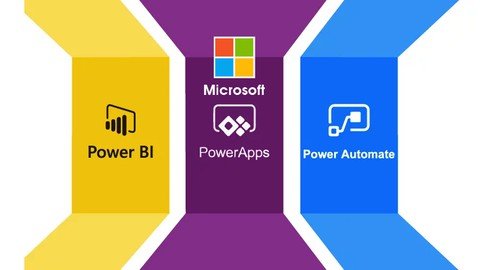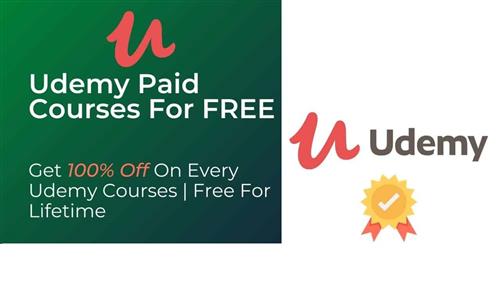Pl-900 Microsoft Power Platform Fundamentals 2022
"softddl.org"
17-11-2022, 07:36
-
Share on social networks:
-
Download for free: Pl-900
-

Last updated 9/2022
MP4 | Video: h264, 1280x720 | Audio: AAC, 44.1 KHz
Language: English | Size: 2.56 GB | Duration: 8h 9m
Learn about Power Apps, Power Automate, Power BI, the AI Builder and the Dataverse (CDS) - for Microsoft's PL-900 exam.

Last updated 9/2022
MP4 | Video: h264, 1280x720 | Audio: AAC, 44.1 KHz
Language: English | Size: 2.56 GB | Duration: 8h 9m
Learn about Power Apps, Power Automate, Power BI, the AI Builder and the Dataverse (CDS) - for Microsoft's PL-900 exam.
What you'll learn
Describe the business value of Microsoft's Power Platform
Identify the Core Components of Power Platform, including Dataverse (CDS), Connectors and AI Builder
Demonstrate the capabilities of Power BI
Demonstrate the capabilities of Power Apps
Demonstrate the capabilities of Power Automate
Demonstrate the capabilities of Power Virtual Agents
Requirements
You need to know how to use a computer, and hopefully know how to use a spreadsheet.
No prior knowledge of Microsoft's Power Platform or any of its apps are required
You need Windows 7 SP1 or above, or for other machines an internet browser (Edge or Chrome preferred) to access most of the apps used in this course.
You need Windows 8 or 10 to access Power BI Desktop; however, you can access Power BI Server on other devices.
There is a 30-day refund guarantee of this Udemy course (see Udemy's refund policy).
Why not have a look at the curriculum below and see what you can learn?
Description
This course covers the content required for the PL-900 certification exam, current as per the PL-900 exam update of 29 April 2022.What do people like you say about this course?Halima says: "Excellent delivery! This course is quite up-to-date with all the new terminologies included. It was just what I needed to pass the PL-900 exam on first attempt. Thank you : )"Vibhaw says: "Pin point course to crack Pl-900 exam. Today i write the exam and got 807 marks. Thanks for your teaching."Madeline says: "Scored a 740 out of 700 with this course and a few weeks of hands on power BI. It was my very first MS test. Thanks for the course!" This course is the foundation for the Microsoft Certificate PL-900 "Microsoft Power Platform Fundamentals", and focuses on the various apps which make up the Power Platform, together with how they can be used by other programs, apps and services.We'll start off with looking at Power BI. If you have a PC, we'll download for free Power BI Desktop, and look at the various processes which you can use on the Power BI Desktop. Then, we'll look at the Power BI Service (available through any modern web browser), see what you can do with this, and how they compare. We'll then look at Power Apps. We'll get a free Developer edition and or free trial of Power Apps, and get some sample data using the Dataverse (previously known as the Common Data Service). We'll then create each of the three different types of Power Apps: Canvas, model-driven, and portals, while looking at the various types of connectors you can use to connect to different data sources.Next up is Power Automate. Using our free Developer edition, we'll create several automated flows, and the different triggers and actions you can use.The next app is Power Virtual Agents. We'll create a basic chatbot which can ask and answer a few questions. We'll then see how you can find out how well it is performing.We will have a brief look at the AI Builder, and how models such as the business card reader, object detection model, form processing model and prediction model can be integrated into Power Apps and Power Automate.We'll finish off by looking at how Power Platform can extend other business solutions, and some Power Platform administration and security.No prior knowledge is required - we'll even see how to get a free Power Platform trial!There are regular quizzes to help you remember the information, so you can be sure that you are learning.Once you have completed this course, you will have a good introductory knowledge of Power Platform and what the capacities of these different apps are. And with some practice, you could even go for the official Microsoft certification PL-900 - wouldn't that look good on your CV or resume? And if you are an American college student, you might even get college credit for passing that exam.So, without any further ado, let's have a look at how you can use Udemy interface, and then we'll have a look at the objectives for the exam and therefore the syllabus for this course.
Overview
Section 1: Introduction
Lecture 1 Introduction
Lecture 2 Welcome to Udemy
Lecture 3 How to get the best out of your Udemy course
Lecture 4 Do you want auto-translated subtitles in more languages?
Lecture 5 1, 2, 3, 4, 5, 6. The business value of Power Platform services
Lecture 6 Curriculum
Lecture 7 Resources
Section 2: Power BI Desktop - Visualizations
Lecture 8 Downloading Power BI Desktop
Lecture 9 40. Identify available types of data sources including Microsoft Excel
Lecture 10 41c. Creating our first visualization
Lecture 11 39. Describe and implement aggregate functions
Lecture 12 31. Identify and describe uses for visualization controls - basic types
Lecture 13 31. Identify and describe uses for visualization controls - advanced types
Lecture 14 32. Describe types of filters
Lecture 15 34. Describe uses for custom visuals including charts or controls
Section 3: Power BI Desktop - Managing Data
Lecture 16 Loading queries into the Power Query Editor
Lecture 17 Menus in Power Query Editor
Lecture 18 38. Clean and transform data
Lecture 19 37a. Combine multiple data sources
Lecture 20 33. Describe the Power BI Desktop Reports, Data, and Model tabs
Section 4: Power BI Service
Lecture 21 Publishing to the Power BI Service
Lecture 22 Why do I need a Work email address? And how can I get one, if I don't have it?
Lecture 23 A quick look around the Power BI Service
Lecture 24 Power BI Terminology
Lecture 25 36. Compare and contrast Power BI Desktop and Power BI Service
Lecture 26 42. Design a Power BI Dashboard
Lecture 27 35, 44. Compare and contrast and publish reports, dashboards and workspaces
Lecture 28 41. Shared datasets and template apps
Lecture 29 41c. Create a Power BI report
Lecture 30 41b. Describe options for viewing Power BI reports and dashboards
Lecture 31 36b. Describe using Power BI in mobile apps
Section 5: Installing Power Apps and Environments
Lecture 32 45. Introduction to Power Apps, incl. canvas and model-driven apps
Lecture 33 Signing up for PowerApps
Lecture 34 Creating our first canvas Power App
Lecture 35 14. Describe Environments
Section 6: The Dataverse (Common Data Service)
Lecture 36 The Power Apps User Experience
Lecture 37 19. Tables
Lecture 38 19, 23. Columns and Relationships, and describing people, places, things
Lecture 39 18a. The difference between databases and Dataverse
Lecture 40 18b. The difference between Dataverse and Dataverse for Teams
Lecture 41 20. Solutions
Lecture 42 21. Business Rules
Lecture 43 21. Real-time workflows and actions
Lecture 44 22. Dataflows
Section 7: Creating PowerApps canvas app
Lecture 45 49, 51. Templates, including types of data sources and multiple data sources
Lecture 46 26, 50. Connect to data by using connectors, and premium licensing options
Lecture 47 27. Identify use cases for custom connectors
Lecture 48 What does the end-user see?
Lecture 49 52. Use controls to design the user experience
Lecture 50 Components
Lecture 51 48. Formulas
Lecture 52 54. Publish and share an app
Lecture 53 Revert to an earlier version
Lecture 54 53. Embedding into Microsoft Teams
Section 8: Building a basic model-driven app
Lecture 55 60. Modify views
Lecture 56 60. Modify forms
Lecture 57 Charts and Dashboards
Lecture 58 Creating a model-driven app
Lecture 59 59. Creating our first model-driven app, incl. adding tables to app navigation
Lecture 60 61. Publish and share an app
Section 9: Power Automate - connectors, triggers and actions
Lecture 61 24, 62, 63, 64: Introduction, incl. flow types, templates, connectors, triggers
Lecture 62 25, 68, 69: Creating, modifying and running an instant (button) flow
Lecture 63 66, 68: Creating an automated flow template with a condition and expression
Lecture 64 65, 68. Creating a scheduled flow, using an Apply to Each loop
Lecture 65 65, 70. Other flow controls, such as Switch and Do Until
Lecture 66 Update
Lecture 67 67. Approvals and Business Processes
Lecture 68 66a. Describe the Power Automate portal and mobile
Lecture 69 66a. Describe the Power Automate Desktop
Section 10: Power Virtual Agents
Lecture 70 74, 78. Uses and where you can publish chatbots, creating our first chatbot
Lecture 71 81. Test a chatbot
Lecture 72 75, 77, 80. Topics, entities and actions
Lecture 73 Looking at topic conversation flowcharts
Lecture 74 76, 79. Creating a topic, using nodes, conditions, and trigger phrases
Lecture 75 81. Publish a chatbot
Lecture 76 72. Describe use cases for Power Virtual Agents within Microsoft Teams
Section 11: Other Power Platform Topics
Lecture 77 28, 29, 30. AI Builder
Lecture 78 30a. Consuming AI Builder in Microsoft Teams and SharePoint
Lecture 79 10a. How Power Platform can consume Azure Cognitive Services
Lecture 80 12. Power Platform Security
Lecture 81 12. Azure Identity Services and Access Management (IAM)
Lecture 82 13, 15. Manage apps and users, and where to perform specific admin tasks
Lecture 83 16. Data Loss Prevention (DLP) policies
Lecture 84 17. Privacy and accessibility guidelines
Lecture 85 17a. Privacy and accessibility capabilities
Lecture 86 17b. Power Platform governance capabilities
Lecture 87 7. Dynamics 365 and Power Platform
Lecture 88 8, 9. Microsoft 365 and Power Platform
Lecture 89 10, 11. Microsoft Azure, Third-party apps, and Power Platform
Lecture 90 11a. AppSource
Lecture 91 11b. How Microsoft Power Platforms apps works together
Lecture 92 17c. Analytics
Section 12: Congratulations
Lecture 93 What's Next?
Lecture 94 Well done
Section 13: Bonus Section
Lecture 95 No longer needed for PL-900 exam
Lecture 96 43. Power BI - Design data layout and mapping
Lecture 97 22. The Common Data Model (CDM)
Lecture 98 23a. The Native Dataverse connector
Lecture 99 83, 84. Power Virtual Agents - Monitor chatbot usage and performance
Section 14: Bonus - Creating PowerApps portal
Lecture 100 Power Pages
Lecture 101 55. Provision and create our first portal using the Portal from blank template
Lecture 102 55. Other Portal templates
Lecture 103 56, 58. Describe common portal customizations, including themes
Lecture 104 57. User authentication
Section 15: Bonus Lecture
Lecture 105 Bonus Lecture
This course is for you if you want to understand what is available on Microsoft's Power Platform.,By the end of this course, after entering the official Practice Tests, you could enter (and hopefully pass) Microsoft's official PL-900 exam.,Wouldn't the "Microsoft Certified: Power Platform Fundamentals" certification look good on your CV or resume?
Homepage
https://www.udemy.com/course/pl-900-microsoft-power-platform-fundamentals-r/
https://rapidgator.net/file/0a6837122e91449ef4c43a59192b2fbc/gjhxs.Pl900.Microsoft.Power.Platform.Fundamentals.2022.part1.rar.html
https://rapidgator.net/file/0d49ff292d929bce9029b3fb79f7d710/gjhxs.Pl900.Microsoft.Power.Platform.Fundamentals.2022.part2.rar.html
https://rapidgator.net/file/f7843f2f04c4601c5acce4acec48b8ba/gjhxs.Pl900.Microsoft.Power.Platform.Fundamentals.2022.part3.rar.html

https://uploadgig.com/file/download/B0310aA245ebeF92/gjhxs.Pl900.Microsoft.Power.Platform.Fundamentals.2022.part1.rar
https://uploadgig.com/file/download/3c7a556c194055b6/gjhxs.Pl900.Microsoft.Power.Platform.Fundamentals.2022.part2.rar
https://uploadgig.com/file/download/452dB743e296f60C/gjhxs.Pl900.Microsoft.Power.Platform.Fundamentals.2022.part3.rar

https://nitroflare.com/view/7FCAB0ADF00DBC7/gjhxs.Pl900.Microsoft.Power.Platform.Fundamentals.2022.part1.rar
https://nitroflare.com/view/A91723638EC11B0/gjhxs.Pl900.Microsoft.Power.Platform.Fundamentals.2022.part2.rar
https://nitroflare.com/view/624ACAF3E382F18/gjhxs.Pl900.Microsoft.Power.Platform.Fundamentals.2022.part3.rar
Links are Interchangeable - No Password - Single Extraction
The minimum comment length is 50 characters. comments are moderated





